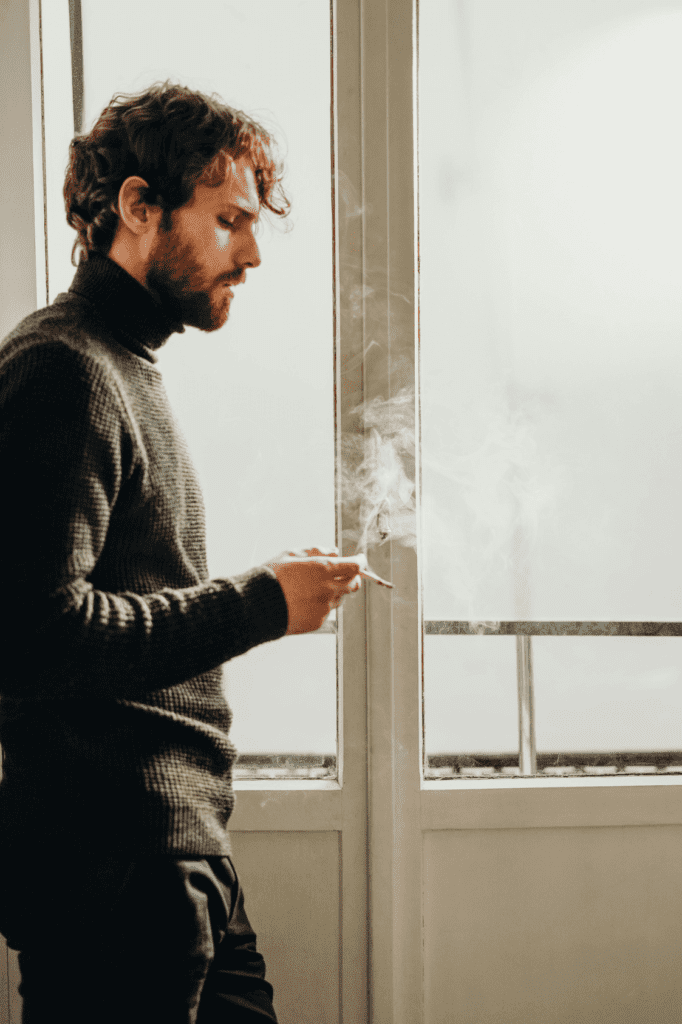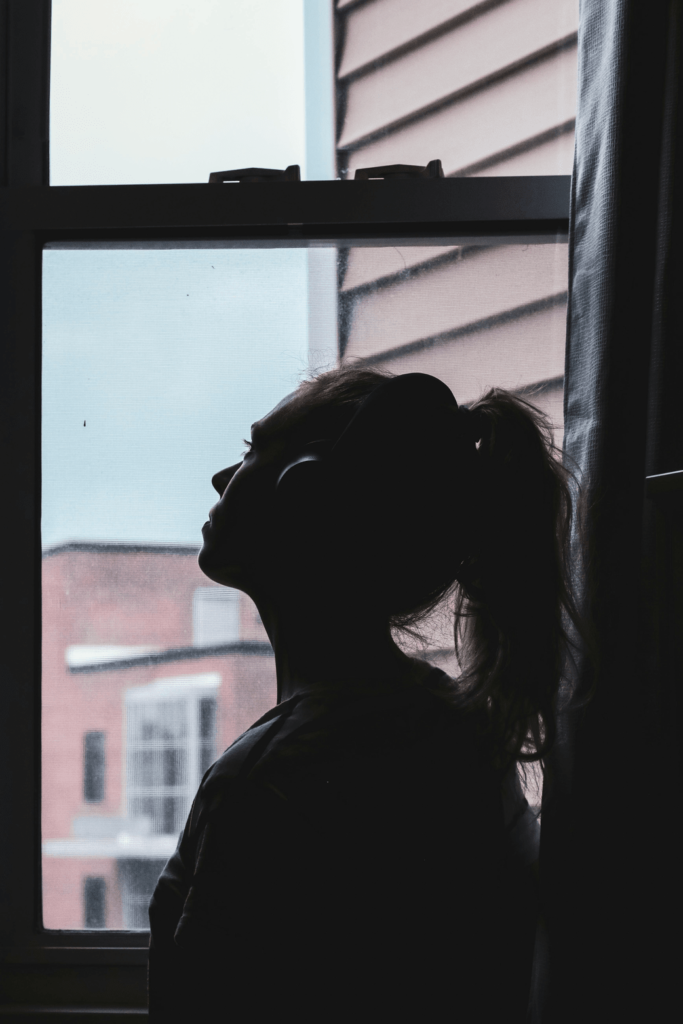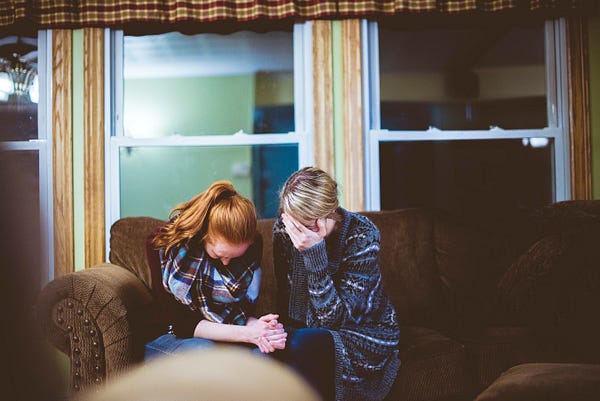Last updated on December 18th, 2024 at 06:38 am
- 1.1 The Neurobiological Basis of Anxiety
- 1.2 The Impact of Anxiety on Daily Life
- 2. Debunking Common Misconceptions About Anxiety
- 2.1 Myth: Anxiety is Just Excessive Worrying
- 2.2 Myth: Anxiety is a Sign of Weakness
- 2.3 Myth: Medication is the Only Effective Treatment for Anxiety
- 3. Recognizing the Signs and Symptoms of Anxiety Disorders
- 3.1 Physical Symptoms
- 3.2 Cognitive Symptoms
- 3.3 Behavioral Symptoms
- 4. The Role of Genetics and Environment in Anxiety Disorders
- 4.1 Genetic Factors
- 4.2 Environmental Factors
- 5. Effective Treatment Approaches for Anxiety Disorders
- 5.1 Psychotherapy
- 5.2 Medication
- 5.3 Lifestyle Changes and Complementary Therapies
- 6. The Importance of Early Intervention and Seeking Help
- 6.1 When to Seek Professional Help
- 6.2 Resources for Support and Treatment
- 7. The Future of Anxiety Research and Treatment
- 8. Anxiety and the Link to Physical Health
- 8.1 Anxiety and Gastrointestinal Issues
- 8.2 Anxiety and Respiratory Issues
- 9. Anxiety and the Role of Genetics
- 9.1 Family History and Anxiety Risk
- 9.2 Anxiety and Personality Traits
- 10. Anxiety and Environmental Factors
- 10.1 Trauma and Anxiety Development
- 10.2 Social Environment and Anxiety
- 11. Anxiety and Co-Occurring Disorders
- 11.1 Anxiety and Depression
- 11.2 Substance Use and Anxiety
- 12. Anxiety and Lifestyle Factors
- 12.1 Diet and Anxiety
- 12.2 Sleep and Anxiety
- 13. Anxiety Treatment Options and Myths
- 13.1 Cognitive Behavioral Therapy
- 13.2 Medication Misconceptions
- 13.3 Natural Remedies and Relaxation Techniques
- 14. Anxiety and Stress Management Techniques
- 14.1 Breathing Techniques for Anxiety
- 14.2 Relaxation Techniques
- 15. Anxiety and Social Interactions
- 15.1 Anxiety in Social Events
- 15.2 Anxiety and Help-Seeking Behavior
- 16. Anxiety and Physical Health Conditions
- 16.1 Anxiety and Heart Rate
- 16.2 Anxiety and Immune System
- 17. Anxiety and Common Misconceptions
- 17.1 Myths About Anxiety Disorders
- 17.2 Common Misconceptions About Panic Attacks
- Frequently Asked Questions
- How Does Anxiety Impact Brain Function?
- What Are the Physical Effects of Anxiety on Heart Health?
- How Can Anxiety Affect Social Situations and Relationships?
- What Are the Myths About Anxiety Medications?
- Can Anxiety Cause Long-Term Physical Health Issues?
- How Does Anxiety Differ from Everyday Stress?
- What Are the Warning Signs of an Anxiety Disorder?
- How Do Anxiety Levels Affect the Quality of Life?
- Is There a Connection Between Anxiety and Major Depression?
- How Effective Are Relaxation Techniques in Anxiety Management?
- What Are the Common Myths About Anxiety and Physical Illness?
- Are There Natural Remedies for Anxiety?
- What Are the Effects of Anxiety on Sleep Patterns?
- How Can Cognitive Behavioral Therapy Help with Anxiety?
- What Role Do Genetics Play in Anxiety Disorders?
- Can Lifestyle Changes Reduce Anxiety Symptoms?
- How Does Social Anxiety Differ from Generalized Anxiety Disorder?
- Are There Specific Physical Symptoms Unique to Panic Attacks?
- How Do Anxiety Disorders Affect Children Differently from Adults?
- Can People Recover Fully from Anxiety Disorders?
- What Are the Professional Treatment Options for Anxiety?
Anxiety is a complex and multifaceted mental health condition that affects millions of people worldwide. While occasional feelings of worry or stress are normal parts of life, anxiety disorders go far beyond these everyday experiences.
These disorders are characterized by persistent, intense, and often irrational fears or worries that can significantly impact a person’s daily life and overall well-being.
Anxiety disorders encompass a range of conditions, including generalized anxiety disorder (GAD), panic disorder, social anxiety disorder, and specific phobias. Each of these disorders has its own unique set of symptoms and challenges, but they all share the common thread of excessive, uncontrollable anxiety that interferes with normal functioning.
Let’s uncover 9 common myths & facts about anxiety, including symptoms and treatment options. Get insights to help you navigate anxiety with evidence-based information.
1.1 The Neurobiological Basis of Anxiety
To truly understand anxiety disorders, it’s essential to delve into their neurobiological underpinnings. Research has shown that anxiety disorders involve complex interactions between various brain regions, neurotransmitters, and hormones. The amygdala, a key structure in the brain’s emotion processing center, plays a crucial role in anxiety disorders. In individuals with anxiety, the amygdala tends to be hyperactive, leading to an exaggerated fear response.
Additionally, imbalances in neurotransmitters such as serotonin, norepinephrine, and gamma-aminobutyric acid (GABA) have been implicated in the development of anxiety disorders. These chemical messengers help regulate mood, emotions, and stress responses, and their dysregulation can contribute to the persistent anxiety experienced by those with these disorders.
1.2 The Impact of Anxiety on Daily Life
Anxiety disorders can have a profound impact on various aspects of a person’s life. From work and relationships to personal hobbies and social interactions, the effects of anxiety can be far-reaching. Some common ways anxiety can affect daily life include:
– Difficulty concentrating or making decisions
– Avoidance of social situations or public spaces
– Insomnia or other sleep disturbances
– Physical symptoms such as muscle tension, headaches, or gastrointestinal issues
– Impaired work or academic performance
– Strained relationships with family and friends


2. Debunking Common Misconceptions About Anxiety
Despite the prevalence of anxiety disorders, many misconceptions persist about their nature, causes, and treatment. Addressing these myths is essential for promoting greater understanding and reducing the stigma surrounding anxiety disorders.
2.1 Myth: Anxiety is Just Excessive Worrying
While worry is a component of anxiety disorders, it’s far from the whole picture. Anxiety involves a complex interplay of cognitive, emotional, and physical symptoms that go beyond simple worry. Individuals with anxiety disorders often experience intense physical sensations, such as rapid heartbeat, sweating, and shortness of breath, as well as intrusive thoughts and behavioral changes.
2.2 Myth: Anxiety is a Sign of Weakness
This harmful misconception can prevent individuals from seeking help and perpetuate feelings of shame or inadequacy. In reality, anxiety disorders are medical conditions with biological and environmental risk factors, much like diabetes or heart disease. Experiencing anxiety does not reflect a person’s character or strength.
2.3 Myth: Medication is the Only Effective Treatment for Anxiety
While medication can be an important component of anxiety treatment for some individuals, it’s not the only option. Many people find relief through psychotherapy, particularly cognitive-behavioral therapy (CBT), mindfulness practices, lifestyle changes, or a combination of these approaches. The most effective treatment plan varies from person to person and should be tailored to individual needs and preferences.
3. Recognizing the Signs and Symptoms of Anxiety Disorders
Identifying anxiety disorders can be challenging, as symptoms can vary widely between individuals and may overlap with other mental health conditions. However, some common signs and symptoms can help in recognizing anxiety disorders.
3.1 Physical Symptoms
– Rapid heartbeat or palpitations
– Sweating
– Trembling or shaking
– Shortness of breath or hyperventilation
– Muscle tension or aches
– Fatigue
– Nausea or gastrointestinal distress
– Headaches
3.2 Cognitive Symptoms
– Excessive worry or fear
– Difficulty concentrating
– Racing thoughts
– Trouble making decisions
– Feeling on edge or restless
– Irritability
– Intrusive thoughts or obsessions
3.3 Behavioral Symptoms
– Avoidance of anxiety-provoking situations
– Procrastination or difficulty completing tasks
– Seeking reassurance from others
– Perfectionism or over-preparing
– Compulsive behaviors or rituals


4. The Role of Genetics and Environment in Anxiety Disorders
Understanding the causes of anxiety disorders involves examining both genetic and environmental factors. Research has shown that anxiety disorders have a strong hereditary component, with studies suggesting that genetics account for approximately 30-50% of the risk for developing an anxiety disorder.
4.1 Genetic Factors
Several genes have been implicated in the development of anxiety disorders, including those involved in neurotransmitter systems and stress responses. However, the genetic basis of anxiety is complex and likely involves multiple genes interacting with each other and the environment.
4.2 Environmental Factors
Environmental influences play a significant role in the development of anxiety disorders. Some key environmental risk factors include:
– Childhood trauma or abuse
– Chronic stress
– Major life changes or transitions
– Substance abuse
– Medical conditions
– Socioeconomic factors
The interplay between genetic predisposition and environmental triggers is crucial in understanding why some individuals develop anxiety disorders while others do not.
5. Effective Treatment Approaches for Anxiety Disorders
Treating anxiety disorders often involves a multifaceted approach tailored to the individual’s specific needs and preferences. The most effective treatment plans typically combine various therapeutic modalities and lifestyle changes.
5.1 Psychotherapy
Cognitive-behavioral therapy (CBT) is widely considered the gold standard for treating anxiety disorders. CBT helps individuals identify and challenge negative thought patterns and behaviors associated with anxiety. Other effective forms of psychotherapy include:
– Exposure therapy
– Acceptance and Commitment Therapy (ACT)
– Dialectical Behavior Therapy (DBT)
– Psychodynamic therapy


5.2 Medication
For some individuals, medication can be an essential component of anxiety treatment. Common medications used to treat anxiety disorders include:
– Selective Serotonin Reuptake Inhibitors (SSRIs)
– Serotonin-Norepinephrine Reuptake Inhibitors (SNRIs)
– Benzodiazepines (for short-term use)
– Buspirone
It’s important to work closely with a healthcare provider to determine the most appropriate medication and dosage, as well as to monitor for potential side effects.
5.3 Lifestyle Changes and Complementary Therapies
In addition to traditional treatments, various lifestyle modifications and complementary therapies can help manage anxiety symptoms:
– Regular exercise
– Mindfulness and meditation practices
– Stress reduction techniques
– Proper sleep hygiene
– Dietary changes (e.g., reducing caffeine and alcohol intake)
– Herbal supplements (under medical supervision)
– Acupuncture
– Yoga or tai chi
6. The Importance of Early Intervention and Seeking Help
Recognizing the signs of anxiety disorders and seeking help early is crucial for effective management and recovery. Many individuals with anxiety disorders delay seeking treatment due to stigma, lack of awareness, or the belief that their symptoms will improve on their own.
Early intervention can prevent the escalation of symptoms and reduce the risk of developing comorbid conditions such as depression or substance abuse. It’s essential to encourage open dialogue about mental health and promote awareness of available resources and treatment options.
6.1 When to Seek Professional Help
Individuals should consider seeking professional help if:
– Anxiety symptoms persist for several weeks or months
– Symptoms interfere with daily functioning, work, or relationships
– There are thoughts of self-harm or suicide
– Anxiety is accompanied by other mental health concerns or substance abuse


6.2 Resources for Support and Treatment
Numerous resources are available for individuals seeking help for anxiety disorders:
– Mental health professionals (psychiatrists, psychologists, therapists)
– Primary care physicians
– Support groups (in-person or online)
– Crisis hotlines
– Mental health apps and online resources
Encouraging individuals to reach out for help and providing information about available resources can make a significant difference in their journey towards managing anxiety and improving overall well-being.
7. The Future of Anxiety Research and Treatment
As our understanding of anxiety disorders continues to evolve, new avenues for research and treatment are emerging. Some promising areas of investigation include:
– Personalized medicine approaches based on genetic and biomarker profiles
– Novel pharmacological treatments targeting specific neurotransmitter systems
– Neuroimaging studies to better understand brain function in anxiety disorders
– Digital therapeutics and virtual reality-based treatments
– Integration of artificial intelligence in diagnosis and treatment planning
These advancements hold the potential to improve the accuracy of diagnosis, enhance treatment efficacy, and provide more personalized care for individuals with anxiety disorders.


8. Anxiety and the Link to Physical Health
Anxiety is closely connected to physical health, impacting both acute and chronic conditions. People with anxiety disorders often experience chest pain, racing heart, and increased blood pressure. This overlap makes it essential to understand the realities of anxiety versus actual physical illness.
Anxiety can also cause hot flashes, sweaty palms, and unexplained pains. These symptoms significantly affect day life, making it challenging to differentiate anxiety-related issues from other health concerns.
8.1 Anxiety and Gastrointestinal Issues
One of the less-discussed symptoms of anxiety is its impact on gastrointestinal health. Anxiety and gastrointestinal issues myths often underplay the severity of symptoms like nausea and cramps.
Chronic feelings of stress and extreme anxiety can exacerbate gastrointestinal distress. Conditions such as irritable bowel syndrome (IBS) are often linked to anxiety, impacting overall quality of life.
8.2 Anxiety and Respiratory Issues
Anxiety can contribute to respiratory problems like shortness of breath and irregular heartbeat. This is particularly evident in people experiencing panic symptoms, where hyperventilation is common.
Diaphragmatic breathing and relaxation techniques can aid in managing these symptoms. These methods can help restore balance to the respiratory system in moments of high anxiety.
9. Anxiety and the Role of Genetics
Genetic factors contribute significantly to anxiety, but anxiety and genetics myths suggest otherwise. Anxiety can be hereditary, with family history serving as a strong indicator for developing anxiety disorders.
Genetic predispositions, combined with life experiences and environmental factors, determine anxiety severity. People with certain genetic markers are more susceptible to developing chronic anxiety.


9.1 Family History and Anxiety Risk
Individuals with a family history of mental health disorders, like major depression or bipolar disorder, are more likely to develop anxiety. Biological factors play a role in how people with anxiety respond to stressful situations.
Co-occurring disorders further increase anxiety risk. Early intervention is crucial for those with a family history of mental disorders.
9.2 Anxiety and Personality Traits
Certain personality traits, such as being a shy person or having perfectionist tendencies, can increase the likelihood of experiencing anxiety. Anxiety and personality myths often disregard these aspects.
Anxious people may have inherent traits that predispose them to anxiety. This is particularly true in social settings where excessive self-consciousness can trigger anxiety.
10. Anxiety and Environmental Factors
Anxiety and environment facts show that a person’s surroundings significantly influence anxiety levels. Stressful environments at work, home, or in social events can heighten anxiety.
Frequent exposure to high-pressure situations can lead to increased anxiety over time. Anxiety in adults facts emphasize the importance of a balanced environment to maintain mental health.
10.1 Trauma and Anxiety Development
Experiencing a traumatic event, such as an accident or abuse, can increase the risk of developing post-traumatic stress disorder (PTSD). Anxiety and trauma facts highlight the need for early intervention.
Professional care is crucial to prevent long-term anxiety unwellness. Addressing trauma early helps mitigate anxiety development.


10.2 Social Environment and Anxiety
Social settings can be particularly challenging for people with anxiety. Common types of social situations, like public speaking or gatherings, can trigger intense fear.
Symptoms include sweaty palms, accelerated heart rate, and panic feelings. Effective anxiety management often involves stress management techniques like deep breaths and cognitive behavioral therapy.
11. Anxiety and Co-Occurring Disorders
Anxiety often exists alongside other mental health conditions, making treatment more complex. People with depression, addiction issues, or personality disorders frequently experience overlapping symptoms.
Tailored mental health care is essential for these individuals. Addressing multiple issues concurrently can improve treatment outcomes.
11.1 Anxiety and Depression
Anxiety and depression myths suggest these conditions are entirely separate, but they often overlap. Episodes of depression frequently coincide with heightened anxiety.
This overlap can make managing daily responsibilities challenging. Mental health services must consider both anxiety and depressive episodes for effective care.


11.2 Substance Use and Anxiety
There is a strong link between substance use disorder and anxiety. Anxiety and substance abuse facts show that alcohol and drugs are used by some people with anxiety as coping mechanisms.
This can lead to addiction, making anxiety symptoms worse. Professional intervention is crucial to break this cycle and promote recovery.
12. Anxiety and Lifestyle Factors
Anxiety and lifestyle choices are closely connected. Diet, exercise, and sleep significantly impact anxiety severity and management.
Regular physical activity can reduce symptoms of anxiety. Conversely, unhealthy habits can exacerbate anxiety symptoms over time.
12.1 Diet and Anxiety
Anxiety and diet facts reveal that certain foods can either exacerbate or alleviate symptoms. Reducing caffeine and sugar intake positively influences anxiety levels.
A diet rich in omega-3 fatty acids and antioxidants supports better brain function. Healthy eating can contribute to reduced anxiety symptoms.
12.2 Sleep and Anxiety
Sleep disturbances are both a symptom and a trigger for anxiety. Anxiety and sleep facts emphasize that poor sleep can worsen anxiety symptoms.
Maintaining a consistent sleep schedule is essential for reducing everyday worry. Adequate rest helps improve overall mental health outcomes.


13. Anxiety Treatment Options and Myths
There are numerous myths about anxiety treatment that prevent people from seeking help. Myths about panic attacks and anxiety medications often deter effective treatment.
Addressing these myths is crucial for promoting evidence-based care. Awareness can help individuals seek the appropriate support they need.
13.1 Cognitive Behavioral Therapy
Cognitive behavioral therapy for anxiety is an effective treatment for managing symptoms. CBT helps change negative thought patterns.
Promoting healthier behaviors is a core part of CBT. This type of therapy is key for clients with anxiety.
13.2 Medication Misconceptions
Anxiety medication myths suggest that medications are either addictive or ineffective. Anxiety medications like SSRIs can be effective when used under medical guidance.
Combining medication with types of therapy often yields the best results. Tailored treatment plans are crucial for anxiety management.
13.3 Natural Remedies and Relaxation Techniques
Natural remedies for anxiety, such as diaphragmatic breathing, can support management. These methods help reduce physical symptoms like muscle tension.
Relaxation techniques are effective when used consistently. Methods like mindfulness and yoga contribute to improved quality of life.


14. Anxiety and Stress Management Techniques
Stressful situations are major triggers for people with anxiety. Stress management techniques help maintain a healthy life for those with anxiety.
Simple practices like deep breaths and meditation can reduce anxiety levels. These techniques are especially helpful during high-stress periods.
14.1 Breathing Techniques for Anxiety
Proper oxygen intake can lower the severity of panic attacks. Breathing techniques, like diaphragmatic breathing, help manage physical symptoms.
Deep breaths can reduce the racing heart and panic feelings. Practicing regularly helps maintain balance during stressful moments.
14.2 Relaxation Techniques
Relaxation techniques, including yoga and progressive muscle relaxation, help reduce anxiety. These methods are vital tools in the journey to recovery today.
Practices like yoga lower anxiety levels and improve daily functionality. Incorporating these into routines can significantly benefit anxious individuals.
15. Anxiety and Social Interactions
Social situations can exacerbate anxiety, particularly for a shy person or those with social anxiety disorder. Anxiety and social media myths contribute to anxiety about online presence.
This affects both day life and social experiences. Addressing these issues is key to reducing social anxiety triggers.


15.1 Anxiety in Social Events
Social events can lead to anxiety attack symptoms. Social anxiety disorder facts reveal that social people are not immune to these feelings.
High-pressure environments like public speaking can trigger anxiety. Awareness and preparation are critical to managing symptoms effectively.
15.2 Anxiety and Help-Seeking Behavior
Anxiety and help-seeking behavior facts emphasize reaching out to mental health professionals. Professional intervention is essential for managing severe symptoms.
Warning signs like persistent fear response require timely action. Seeking help can improve quality of life and reduce long-term effects.
16. Anxiety and Physical Health Conditions
Anxiety is interconnected with various physical health issues. Anxiety and chest pain myths often lead to confusion between anxiety and heart problems.
Chest pain from anxiety is different from heart attacks. Understanding these differences helps people seek the right kind of help.
16.1 Anxiety and Heart Rate
People with panic disorder often experience heart palpitations. These physical responses are part of the body’s natural fear response.
Increased adrenaline leads to an accelerated heart rate. Proper management of anxiety can help regulate these physical symptoms.
16.2 Anxiety and Immune System
Chronic anxiety can weaken the immune system. Anxiety and immune system myths suggest that anxiety does not affect physical immunity.
Research indicates prolonged anxiety leads to reduced immune responses. Proper stress management can help maintain better physical health.


17. Anxiety and Common Misconceptions
Many myths about anxiety perpetuate misunderstanding and stigma. Anxiety and recovery myths discourage people from believing in lasting recovery.
Relapse prevention facts underline the need for ongoing mental health treatments. Protective factors are essential for maintaining progress in recovery.
17.1 Myths About Anxiety Disorders
One common anxiety myth is that anxiety is a choice. In reality, anxiety is a complex mental illness involving brain chemistry and environmental stressors.
Understanding the true nature of anxiety helps reduce stigma. It also promotes better support for people with anxiety.
17.2 Common Misconceptions About Panic Attacks
Panic attack misconceptions often revolve around symptom severity. Some people experience silent symptoms that significantly impact daily life.
These internal symptoms can be just as debilitating as physical signs. Awareness of this diversity can lead to better support.
For more insights into anxiety myths, visit WebMD and Healthline.
From Embrace Inner Chaos to your inbox
Transform your Chaos into authentic personal growth – sign up for our free weekly newsletter! Stay informed on the latest research advancements covering:
Narcissistic Personality Disorder (NPD)
Frequently Asked Questions
How Does Anxiety Impact Brain Function?
Anxiety significantly affects brain function, particularly by influencing neurotransmitters responsible for mood regulation. When someone experiences anxiety, the brain’s amygdala becomes hyperactive, triggering an intense fear response even in non-threatening social situations.
This can affect overall brain chemistry, disrupting the balance of serotonin and dopamine, which are vital for maintaining emotional well-being. The National Institute of Mental Health explains that these disruptions often lead to persistent feelings of worry and restlessness.
Anxiety also affects cognitive functions such as concentration and memory. Persistent anxiety triggers the release of stress hormones like cortisol, which impairs the hippocampus, the brain region responsible for learning and memory.
As a result, individuals may struggle with recall and processing information in everyday life. This can impact their quality of life and performance in day-to-day activities.


What Are the Physical Effects of Anxiety on Heart Health?
Anxiety can have significant physical effects on heart health, leading to symptoms like an accelerated heart rate, heart palpitations, and even chest pain. When experiencing anxiety, the body’s fight-or-flight mechanism is triggered, releasing adrenaline, which causes the heart to pump faster.
According to the American Heart Association, these symptoms are normal for individuals with anxiety disorders but can become concerning if they persist. Persistent anxiety can potentially increase the risk of heart disease over time.
Long-term anxiety can lead to sustained high blood pressure, which stresses the cardiovascular system. While these symptoms mimic heart attack signs, they are generally not indicative of acute illness.
Instead, these symptoms are physical manifestations of the body’s reaction to stress and fear. It is crucial to differentiate between anxiety symptoms and true cardiac events by seeking professional care when in doubt.
How Can Anxiety Affect Social Situations and Relationships?
Anxiety often complicates social situations, making them overwhelming or uncomfortable for those experiencing it. People with social anxiety disorder may feel an intense fear of being judged or scrutinized during interactions.
This fear can prevent them from participating in social events or forming meaningful relationships. As the Social Anxiety Institute notes, this condition can severely limit one’s ability to connect with others, further exacerbating feelings of isolation.
The fear of embarrassment or rejection often leads individuals to avoid social settings. Family members and friends may misunderstand the person’s reluctance to engage socially, perceiving it as disinterest rather than anxiety.
Over time, this can diminish the quality of relationships. It also makes supportive connections more challenging to maintain.
What Are the Myths About Anxiety Medications?
One common myth about anxiety medications is that they are highly addictive and should be avoided at all costs. However, modern anxiety medications, when prescribed and monitored by healthcare professionals, are generally safe and effective.
The Mayo Clinic highlights that medications such as SSRIs (selective serotonin reuptake inhibitors) are often used to manage anxiety without a high risk of dependency. This is especially true compared to older medications like benzodiazepines.
Another misconception is that taking medication is a sign of weakness or inability to cope with stress naturally. In reality, medication is an essential part of treatment for many individuals, providing the necessary balance in brain chemistry.
Medication helps manage anxiety symptoms effectively. It is often used in conjunction with other treatments like cognitive behavioral therapy to achieve a reduction in symptoms.


Can Anxiety Cause Long-Term Physical Health Issues?
Yes, anxiety can lead to long-term physical health issues if not managed properly. Chronic anxiety results in prolonged activation of the body’s stress response, which increases the release of hormones like cortisol.
According to the Cleveland Clinic, this can lead to a weakened immune system. This makes individuals more susceptible to infections and chronic illnesses such as gastrointestinal issues and heart disease.
Additionally, anxiety can cause muscle tension, headaches, and digestive problems like irritable bowel syndrome (IBS). These physical symptoms often persist due to the body’s continuous state of heightened alertness.
This constant strain can significantly impact one’s physical health. It also contributes to a reduced quality of life over time if left untreated.
How Does Anxiety Differ from Everyday Stress?
Anxiety and everyday stress are often confused, but they are fundamentally different in their nature and impact. Stress is typically a response to an immediate, identifiable cause and tends to resolve once the stressor is removed.
In contrast, anxiety often persists without a clear trigger, leading to a constant feeling of dread or worry. The American Psychological Association states that anxiety can significantly interfere with daily functioning and is usually more intense than everyday stress.
While stress might motivate someone to take action, such as meeting a deadline, anxiety often results in avoidance behavior. This affects one’s ability to engage in normal activities.
Chronic anxiety can disrupt sleep, concentration, and even physical health. This makes it more debilitating than typical stress, which tends to be more situational and temporary.


What Are the Warning Signs of an Anxiety Disorder?
Warning signs of an anxiety disorder often include excessive worry, trouble sleeping, and physical symptoms such as sweaty palms, racing heart, and unexplained pains. These symptoms differ from normal anxiety by their frequency and intensity.
According to the Anxiety and Depression Association of America, individuals with anxiety disorders may experience persistent symptoms for prolonged periods of time. These symptoms can interfere with daily tasks and responsibilities.
Other warning signs include avoidance of situations that may trigger anxiety and constant worry about future events. There is also difficulty in controlling feelings of anxiousness.
Recognizing these symptoms early is critical. Untreated anxiety can escalate, leading to more severe health issues, both mental and physical, requiring active intervention.
How Do Anxiety Levels Affect the Quality of Life?
Elevated anxiety levels can greatly diminish a person’s quality of life by affecting their ability to perform everyday tasks, engage in relationships, and enjoy social activities. Anxiety often leads to avoidance behaviors, such as skipping social events or not pursuing career opportunities.
This can result in a restricted lifestyle. According to Harvard Health, this avoidance can lead to a cycle of increased anxiety, further limiting one’s engagement in life.
People with high anxiety levels also tend to experience physical symptoms such as fatigue, muscle tension, and digestive problems. These contribute to a lower quality of life.
Mental and physical health are interconnected. Chronic anxiety can reduce overall satisfaction and the capacity to live a fulfilling, healthy life.
Is There a Connection Between Anxiety and Major Depression?
There is a strong connection between anxiety and major depression, as they often co-occur and share many overlapping symptoms. People with anxiety are more likely to develop depression, and vice versa, due to the similar chemical imbalances involved in both conditions.
According to the World Health Organization, this co-occurrence is common. Many individuals experience symptoms of both mental health disorders simultaneously.
The presence of both anxiety and depression can complicate the treatment process, often requiring a combination of medications and therapies. Cognitive behavioral therapy (CBT) has been shown to be particularly effective in treating both conditions.
CBT helps individuals manage the thoughts and behaviors that contribute to their symptoms. It provides effective coping strategies to help alleviate both anxiety and depression.
How Effective Are Relaxation Techniques in Anxiety Management?
Relaxation techniques such as deep breathing exercises and progressive muscle relaxation are highly effective in managing anxiety symptoms. Techniques like diaphragmatic breathing help regulate oxygen intake and calm the body’s fight-or-flight response.
This leads to a reduction in symptoms. The Cleveland Clinic suggests that these techniques, when practiced regularly, can significantly lower anxiety levels and improve overall well-being.
Progressive muscle relaxation helps reduce muscle tension, a common physical manifestation of anxiety. By focusing on relaxing each muscle group, individuals can relieve the physical symptoms of anxiety.
These symptoms include tightness in the shoulders and neck. Achieving a state of calm benefits both mental and physical health.


What Are the Common Myths About Anxiety and Physical Illness?
A common myth about anxiety is that it only affects mental well-being and has no impact on physical health. In reality, anxiety can significantly impact physical health, contributing to issues like high blood pressure, digestive disturbances, and heart rate irregularities.
The Johns Hopkins Medicine emphasizes that anxiety activates the body’s stress response. Over time, this can contribute to chronic physical conditions.
Another myth is that anxiety-induced physical symptoms, such as chest pain and trouble breathing, are always indicative of heart disease. While these symptoms are concerning, they are often manifestations of anxiety rather than cardiac problems.
Proper medical assessment is necessary to differentiate between anxiety symptoms and actual physical illnesses. Consulting healthcare professionals can help manage these symptoms effectively.
Are There Natural Remedies for Anxiety?
Natural remedies, including herbal supplements and lifestyle changes, can help manage anxiety for some people. Herbs like chamomile and valerian root are known for their calming effects and have been used to alleviate anxiety symptoms.
According to WebMD, these natural remedies can complement other treatments. However, they should not replace prescribed medications or therapies without medical advice.
Regular physical activity and proper sleep also play essential roles in anxiety management. Exercise helps reduce stress hormone levels and improves mood through the release of endorphins.
Maintaining a consistent sleep schedule aids in reducing anxiety by ensuring the body gets enough rest. This is crucial for emotional balance and brain function.
What Are the Effects of Anxiety on Sleep Patterns?
Anxiety can severely disrupt sleep patterns, often leading to difficulties in falling asleep or staying asleep throughout the night. Individuals with anxiety tend to ruminate over worries before bedtime.
This triggers physiological responses like increased heart rate and muscle tension, making relaxation difficult. The Sleep Foundation notes that these symptoms are common among people with generalized anxiety disorder.
Poor sleep quality exacerbates anxiety symptoms, creating a vicious cycle. Anxiety leads to sleep problems, which in turn heighten anxiety.
Chronic sleep issues may eventually lead to insomnia. This further impacts one’s mental and physical health, reducing their ability to cope with everyday stressors.
How Can Cognitive Behavioral Therapy Help with Anxiety?
Cognitive Behavioral Therapy (CBT) is one of the most effective treatments for anxiety, focusing on changing the thought patterns that contribute to anxious feelings. CBT helps individuals identify and challenge irrational beliefs.
These beliefs are then replaced with healthier, more balanced thoughts. According to the National Institute of Mental Health, CBT has been highly effective in treating various types of anxiety disorders, including social anxiety and generalized anxiety disorder.
Through regular practice of CBT techniques, individuals learn how to respond to anxiety triggers in more adaptive ways. Exposure therapy, a part of CBT, gradually desensitizes individuals to anxiety-provoking situations.
This reduces their fear response over time. This process helps in achieving a lasting reduction in anxiety symptoms and improves overall quality of life.
What Role Do Genetics Play in Anxiety Disorders?
Genetics can play a significant role in the development of anxiety disorders. Research suggests that individuals with a family history of anxiety are more likely to experience anxiety themselves.
Certain genetic factors can predispose people to increased anxiety levels. The National Institute on Drug Abuse explains that these genetic factors, combined with life experiences, can make someone more susceptible to anxiety.
While genetics may increase vulnerability, they do not guarantee that an individual will develop an anxiety disorder. Environmental factors, such as exposure to stress or trauma, also play crucial roles.
Protective factors like a supportive family environment can help prevent the development of significant anxiety symptoms. It is important to address both genetic and environmental components in treatment.
Can Lifestyle Changes Reduce Anxiety Symptoms?
Yes, lifestyle changes can significantly reduce anxiety symptoms and improve overall mental health. Regular exercise is known to decrease anxiety by reducing the body’s stress hormones and increasing endorphins, which enhance mood.
According to Harvard Health, activities like yoga and aerobic exercises are particularly effective in reducing feelings of anxiety and stress. Exercise also promotes better sleep, which is essential for managing anxiety.
In addition to physical activity, maintaining a healthy diet and consistent sleep schedule can help manage anxiety. Limiting caffeine and alcohol intake, which can exacerbate anxiety symptoms, is also beneficial.
Practicing mindfulness or meditation can promote relaxation and reduce stress. These changes, while not a replacement for professional treatment, can be beneficial for long-term anxiety management.
How Does Social Anxiety Differ from Generalized Anxiety Disorder?
Social anxiety disorder and generalized anxiety disorder (GAD) are both forms of anxiety but differ in their specific triggers and symptoms. Social anxiety is characterized by an intense fear of social situations, particularly those that involve possible judgment by others.
The Anxiety and Depression Association of America explains that social anxiety often leads to avoidance of social interactions, such as public speaking or attending gatherings. These behaviors can significantly impact one’s ability to maintain relationships.
On the other hand, generalized anxiety disorder involves excessive worry about a wide range of everyday issues, such as work, health, or family. Unlike social anxiety, GAD does not require social interactions to trigger symptoms.
Instead, it is a more pervasive form of anxiety that can affect every aspect of life. This leads to a constant state of worry that can be difficult to manage.
Are There Specific Physical Symptoms Unique to Panic Attacks?
Panic attacks often come with specific physical symptoms that are intense and can be frightening, including a racing heart, chest pain, and shortness of breath. Unlike general anxiety symptoms, panic attacks are sudden and can feel overwhelming, often peaking within minutes.
According to the American Psychological Association, people experiencing a panic attack may also feel dizziness, hot flashes, and a sense of impending doom. These sensations differentiate panic attacks from other forms of anxiety.
These symptoms are the result of the body’s heightened fear response, releasing large amounts of adrenaline. This accelerates heart rate and causes hyperventilation.
While panic attacks are not life-threatening, they can severely impact one’s mental well-being. They can also make individuals fearful of future episodes, leading to avoidance of certain activities or places.
How Do Anxiety Disorders Affect Children Differently from Adults?
Anxiety disorders can manifest differently in children compared to adults, often showing up as behavioral changes like irritability or clinging behavior. Children with anxiety may have trouble concentrating at school and may experience frequent physical complaints, such as stomach aches or headaches.
These symptoms may occur without any clear medical cause. The Child Mind Institute states that these symptoms often go unnoticed as they are mistaken for normal childhood behavior.
Adults, on the other hand, may exhibit more typical anxiety symptoms like excessive worry, restlessness, and trouble sleeping. Children are also more likely to develop specific phobias or social anxiety due to a lack of coping mechanisms.
Their limited life experiences make it difficult to handle anxiety-provoking situations effectively. Early intervention and treatment are crucial for children, as untreated anxiety can lead to significant academic and social challenges.
Can People Recover Fully from Anxiety Disorders?
Recovery from anxiety disorders is possible with the right combination of treatments and lifestyle adjustments. Evidence-based therapies like Cognitive Behavioral Therapy (CBT) and medication have been shown to be highly effective in helping people manage anxiety symptoms.
The World Health Organization explains that while anxiety may not always be completely eradicated, many individuals can achieve a significant reduction in symptoms. This allows them to lead fulfilling lives.
Long-term recovery often requires ongoing management, including stress management techniques and regular therapy sessions. Support from family and friends also plays a vital role in recovery.
Providing individuals with a safety net helps them navigate periods of high anxiety. With a comprehensive treatment plan, many people experience lasting improvement and regain control over their lives.
What Are the Professional Treatment Options for Anxiety?
Professional treatment options for anxiety include a combination of medication, therapy, and lifestyle interventions. Medications like selective serotonin reuptake inhibitors (SSRIs) help regulate brain chemistry, while therapies like Cognitive Behavioral Therapy (CBT) work to modify the thought patterns that contribute to anxiety.
According to Johns Hopkins Medicine, these methods are often used in conjunction to maximize treatment efficacy. Medications help manage the chemical imbalances while therapy provides practical coping mechanisms.
In addition to medication and therapy, some individuals benefit from relaxation techniques and structured stress management programs. These methods provide additional support in managing anxiety symptoms.
Professional care is often tailored to meet the specific needs of the individual. The focus is on both short-term symptom relief and long-term anxiety management strategies.



